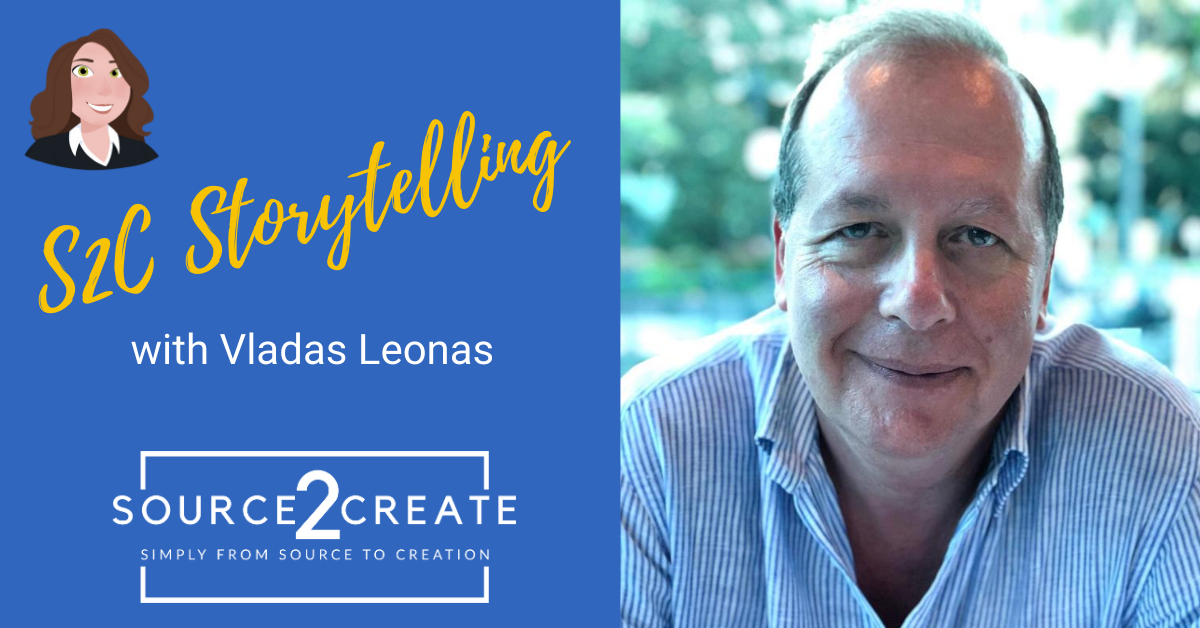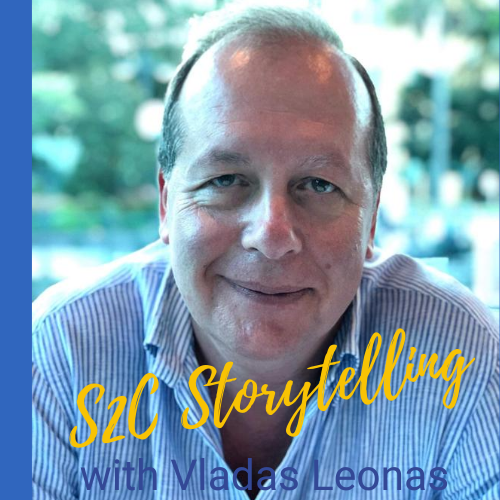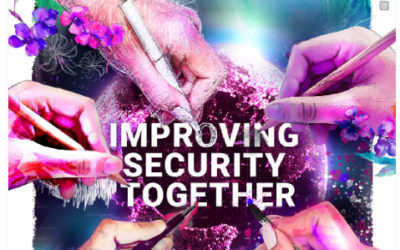S2C Storytelling with ICT ‘transformer’ Vladas Leonas
Moscow-born Dr Vladas Leonas fled his country of birth – in part to escape the restrictive and constraining policies of the USSR – and to embark on a new life – and adventure – in Australia.
Not only did he successfully settle in his adoptive country, but he’s left an indelible mark on the ICT landscape.
He’ll tell you his “greatest achievement is building a successful career in a new and unfamiliar country” – where he knew no one at the time of arrival.
But there’s more to the story. Over the years, as CTO and CIO, Leonas has delivered massive, large-scale projects across government, and led large groups through major transformative projects and change.
Indeed, he’s been at the coalface of the Australian ICT industry, performing a variety of roles including Telstra general manager of technology, national IT manager and section head of intelligent networks; GTech Australasia director of technology; CTO of Australian Centre for Advanced Computing and Communications (ac3); CIO of NSW DPWS; CIO of NSW Land and Housing Corporation; the CIO of Transport Construction Authority; as well as acting group CIO and deputy group CIO of Transport for NSW – to name a few.
S2C caught up with Leonas to discuss his early days in the USSR and journey to Australia; his lessons learned; and his “once in a lifetime” initiatives of national or state importance.

S2C: What was your first job?
I was a full-time student and part-time lab assistant in a physics lab. This wasn’t a study lab – this was a real research lab with a vacuum camera. The research was about collision of molecular beams with a solid-state target. It was interesting at the beginning when everything was new, but soon became routine and boring.
My second job was more interesting: I was a night-shift operator working part-time (2-3 nights a week) on a mainframe computer while also a full-time student. This was still the era of dinosaur mainframes. Those days night-shift operators were gods – they had the freedom of determining whose deck of punched cards will or will not be processed overnight (yes, programmers had one go a day; two if they were lucky to run their programs to debug them or produce required calculations).
It was real fun – I was the first one to introduce real multiprogramming mode on this computer by loading several decks of punched cards onto a tape and then feeding the computer both from the tape drive and punched cards reader. The computer was interesting – it was a Soviet copy of Siemens 4004 (one can see a glimpse of 4004 in the 1985 ‘Spies like Us’ movie), which in turn was a copy of RCA Spectra 70. They both were IBM/360 compatible, but used a different O/S, not DOS 360 and not OS 360. The name of this third-generation computer was – ASVT M4030 – and at the time it was assessed by the CIA.
S2C: Did you always envision a career in IT?
Actually, I wanted to be a physicist like my father. I wasn’t accepted for my first choice, which was the School of Physics at the Moscow State University. So, I went with the second choice – School of Computer Science (in the USSR it was called School of Applied Mathematics) at the Moscow Aviation Institute with the view to transfer to my first choice after year one, as curricula were very close for both schools. During year one, I got brief exposure to the obsolete M20 Computer – and from that moment I was hooked on computers.
S2C: How did your journey lead you to Australia?
I never felt at home in my country of birth. My family suffered during the Great Terror, so I’ve been brought up with a full understanding of what communists have done and kept doing. By the time I was 16, I had a dream to leave the USSR. But, if one leaves the country, the family members left behind are at risk of prosecution. The prosecution could range from demotion, or losing a job to something significantly more serious. And if you leave the country, then most likely you’ll never see the rest of the family again.
And it was pretty difficult to live there for someone like me. I rejected an offer to join the Communist Party three times (pretty career limiting move for those who don’t know this), and rejected collaboration with the KGB four times. I had serious difficulty finding a job after I finished my PhD course because I didn’t want to work on any military-related project, and it was hard to find an interesting job outside this sphere. I’m proud of the fact that, at no point in my career in the USSR, did I ever work in support of the Soviet military-industrial complex.
When my PhD work was almost done, my supervisor asked me to add ‘some mathematics’ to my pure computer/software-based thesis. So, I developed an interesting mathematical method in the area of mathematical logic. In the USSR, getting a PhD was more serious than in the West. You had to prepare an abstract and send it to 100 organisations and libraries for unsolicited feedback, then present the thesis in front of one of the officially established panels, and then get the stamp of approval from the High Attestation Committee.
After this, two copies of the thesis had to be sent to the central repository – one to be microfiched; the other was to be forwarded to the KGB. So, I’d successfully gone through all these hoops when I received a phone call from a Uni classmate who wanted to catch up. I knew he was recruited by the KGB. After some small talk he asked: ‘You’ve done something interesting with mathematical logic in your thesis, are you still working in this direction? We’d be very interested in you continuing this work’. My response was immediate: ‘I’m not working in this direction anymore and don’t plan to.’
Then, when Perestroika started – a political movement for reformation within the Communist Party of the Soviet Union during the 1980s and is widely associated with Soviet leader Mikhail Gorbachev – the rules were relaxed to a degree, and so the probability of prosecution of the remaining members of the family decreased.
Then in 1989, Australia opened a skills-based migration program for the USSR. Somehow, I managed to get the M47 Form required for application and applied. Every trip to the Australian Embassy (and there were 3 or 4 of them) was a nerve-racking exercise. Will I be arrested? Will I lose the job? Will the KGB arrest and detain me? Fourteen months later and several forms and medical examinations completed, we were granted permanent residency.
S2C: Was it difficult to actually leave Moscow?
The actual departure was nerve-racking too. We had three months to pack and leave Moscow according to the conditions of the 456-class visa. Our daughter was supposed to go to the US with a group of school children and as much as we wanted to leave the USSR immediately, we decided we’d wait until after our daughter’s trip. We booked our flight for the 23 August – and then the Military Coup occurred August 19. I thought we wouldn’t be able to escape – at this stage it wasn’t clear how the situation would end. But somehow, I managed to exchange our tickets and we left on August 20, 1991. All the way from Moscow to Bangkok with two stops (Tashkent and Delhi) we were nervous as hell and only felt safe once we disembarked from the Aeroflot plane in BKK.
We landed in Sydney not knowing how to do the simplest things – how to use an ATM (USSR was 100% cash economy, no plastic); and how to enter the bus (in Moscow one could enter the bus through any of the three doors). What we also didn’t know was that Australia in August 1991 was arguably at the deepest point of recession.
S2C: What were your early ICT roles in Australia?
I sent over 200 application letters before I landed a role of a (junior) engineer at Cee Data Systems. Just for comparison – I left Moscow as a Head of R&D with five departments reporting to me. Cee Data System was offering packaged computer systems for accounting practices. My role was to test compatibility and performance of various graphics and SCSI cards with SCO Xenix that was used by the company. I was very lucky as I landed my first Australian job in the middle of the recession, just six weeks after landing in Sydney.
I lasted there for about 3 months. I resigned after being offered a better job at OTC. Among these 200+ application letters was one for a role at OTC R&D, in the Intelligent Networks section. As any large company, OTC was not very fast processing job applications – they had invited me for an interview a couple of months after I’d started at Cee Data Systems. I didn’t want to go to this interview since I already had a permanent job.
I’m still grateful for the advice from one of my friends, who said: ‘You’re an idiot; you should go. OTC is a larger company with more interesting work, better pay and more opportunities!’ So, I went to this interview and it ended up being the beginning of my nine-year career at Telstra: four years in R&D, then four years as a CIO of Telstra’s Payphones and Card Services Division, and the last year as GM working on Telstra mega datacentres.
S2C: As CTO and CIO, you’ve accepted major challenges and led large groups through major projects and change. What are some of your biggest lessons learned?
It’s all about people – empowering and sequencing, and not about technology. It’s not good enough just to lay the vision. The implementation of the vision within the required time (and cost), and without burning out the people on the way is a great skill (or a fine art?).
Technology today can deliver everything we need, as long as we’re able to articulate what we need. But, in the absence of business and customer focus, the right people (both attitude first and skills second), the right culture, right governance and sequencing – means there’s a high probability it will all end up in tears. Broken governance and cut corners are a big problem. Far too often people are focused on the promised time, implanting time bombs that will go off later – and when those who’ve implanted them have already ‘left the building.’ Being genuine, open, available, ‘frank and fearless’ are other important ones, as well as proper planning.
S2C: You mention you’ve had “once in a lifetime” initiatives of national or state importance. Can you highlight some of them?
I was very lucky. I’ve had numerous occasions when I’ve participated in “once in a lifetime” opportunities. Here are some of the highlights:
- 1992-1996: As second in charge of the development of a unique world-class Intelligent Network platform (still used by Telstra today), I moved the development process from a small-scale to an industrial scale, including separation of Quality Assurance, Documentation, Systems Administration and Operation of the Test Environment from the original Systems/Software Development process; was a key player in the sale of the platform to ClearNZ, Telecom Malaysia and Teleglobe Canada.
- 1996-1999: As a National IT/Technology Manager oversaw the replacement of 35,000 public payphones across Australia – from tender to full implementation (a $132 million project) and managed pioneering work – the first in the world introduction of multi-functional smart cards (a $30+ million project); also pioneered the transition from a proprietary hardware platform to a commodity Intel-based hardware platform as early as in 1996, well before it became a trend in the 21st century. A Board Member of the Global Chipcard Alliance (1997 – 2000).
- 2003-2004: As a CTO of the Australian Centre for Advanced Computing and Communications (ac3), oversaw the delivery, commissioning and operation of the very first Australian supercomputer with performance exceeding 1 TFlop (rated by the Top500.org as No. 108 in the world) for less than $1 million; that supercomputer was so unique that Oracle requested to use it to benchmark scalability of the Oracle DB as there was no other supercomputer of this type in the world to do this benchmarking.
- 2006 -2010: As a CIO, I oversaw the replacement of the core housing management system for Housing NSW – from tender evaluation to full implementation (a $198 million project).
- 2011-2015: As Acting Group CIO/Deputy Group CIO, I established the ICT function at Transport for NSW.
- 2015-2016: As WestConnex CIO, I established core business processes and business systems, ICT systems and subsequently implemented holistic outsourcing of the ICT function using a pioneering approach with an ‘As-a-Service’ model.
S2C: What challenges/hurdles have you faced in your career?
Probably the two biggest challenges were adjusting to Australia and the transition from a ‘techno’ mentality to a leader mentality.
S2C: What are your top attributes for being a successful leader?
Values and beliefs. Integrity, ethics and customer focus. Taking responsibility and empowering people, developing/mentoring people and allowing people to make mistakes. Right balance between ‘results orientation’ and ‘people focus.’ Being humble, humane, genuine, believable and able to influence people of all walks of life. Vision, ability to deliver the vision and ‘future-proofing’ are important too.
S2C: What advice would you offer to others looking to travel a similar path?
It’s hard to give any advice in this space, though I’m trying to because I’m mentoring as part of my teaching role at the Australian Graduate School for Leadership (AGSL) for a Doctor of Business Leadership Course.
It’s so individual and situational. But I do believe that it’s significantly about the values and beliefs. I guess, the very first step – take constructive comments positively, identify blind spots and keep growing. Look at your values and beliefs. Identify the focus – is it on yourself, or on organisation/common good? Give yourself an honest answer to the question: What is the size of my ego? Is it too big?
S2C: What worries you – or encourages you – about the state of the ICT industry?
Cybersecurity is my biggest worry. Complexity of infrastructure and software ecosystems with huge numbers – and often not thoroughly tested updates – further exacerbated by human errors. All of this has moved us from the situation of ‘if’ (cybersecurity incident, breach, malware outbreak, etc.) it will happen to ‘when’ it will happen. And the lack of protection of IoT devices is a ticking time bomb.
What encourages me? Humanity always was able to solve all types of problems and I’m sure we’ll be able to solve these problems too.
S2C: What was it like managing big ICT projects? What was the hardest thing to juggle?
Finding the right ‘cruising’ height is important. You don’t want to micromanage, and you need to trust your people; but simultaneously you need to watch for the warning signs and be ready to do a deep dive – and fast. Give your people an opportunity to fix the problems; create a culture where people aren’t afraid to bring problems to you and to offer their solutions.
Political commitments and preconceived views, mixed with lack of full understanding are the most difficult to juggle with, as well as people hiding problems that can be easily solved at the time the problems emerge. It becomes too difficult to solve the problem later.
S2C: What’s next on the horizon? What do you want to achieve?
I’m interested in doing a large-scale transformation end-to-end, and to have an opportunity to move a large-scale organisation into ‘IT-as-a-Service’ mode.
S2C: What do you do outside of work? What’s on your bucket list?
I love travelling and I’ve been to a number of iconic places including Machu Picchu, Peru; Petra, Jordan; and Chichen Itza, Mexico. But there are so many other places that I haven’t been to yet! I like skiing and long beach walks. Reading, theatre, music and European movies are my other favourites.
S2C: Who would you like to see featured in an upcoming S2C Storytelling?
Outgoing Sydney Water CIO George Hunt.
Most recent S2C Storytelling:
S2C Storytelling with change agent and author Nina Du Thaler
S2C Storytelling with Australian Analytics Leader Dr Alex Antic
S2C Storytelling with ‘Champion for Women in Security’ Amy Roberts
S2C Storytelling with Aussie CDO Rainer Rhedey
S2C Storytelling with YMCA Victoria Executive Head of Technology Shane Riddle
S2C Storytelling with Heart Foundation CMO Chris Taylor
S2C Storytelling with business influencer Leila Henderson
If you are interested in being a subject for the S2C Storytelling section please do not hesitate to reach out to Jennifer O’Brien at jen@source2create.com.au



